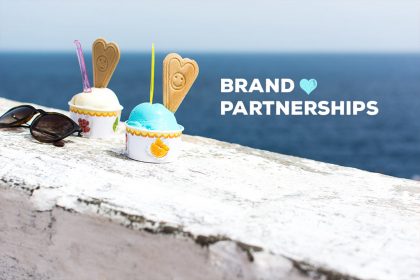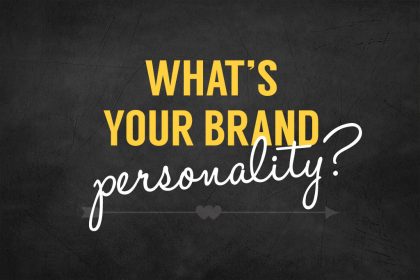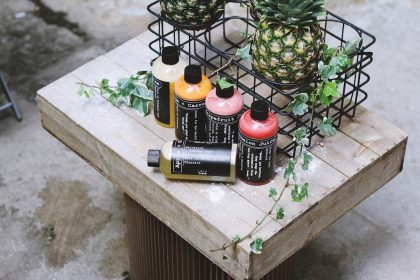Five strategies that will help you grow your brand (with examples)
If a brand is what people say about you when you are not in the room, then you need to make sure people are saying the right things about you. You also need to ensure that they’ve even noticed you in order to talk about you!
But how can you do this? How can you build awareness for your brand, especially if you’re a small start up with a tiny (or non-existent) budget?
Here are five strategies that will help you to grow your brand, with examples demonstrating how other companies are using them.
1) Create an emotional connection between your product and the customers
Take a leaf out of BMW or Aston Martin’s books, and build your brand based on the feelings customers get when they use your services or products. for examples of brand awareness.
Will they feel accomplished? Powerful? Wealthy? Or will you boost their self-esteem and feelings of high status?
You need to move beyond the actual benefits customers get from your products and services, and appeal to their emotions, values and beliefs, so you can make a brand connection that goes beyond a simple transaction.
2) Offer a clear, simple proposition
What’s your brand positioning? What makes your brand stand out? How are you different from other competitors offering similar products or services?
Successful brand awareness is always built on a clear, simple and honest proposition, one that your customers can connect to and care about.
For example, The Ritz-Carlton brand offers an experience that “enlivens the senses, instills well-being, and fulfills even the unexpressed wishes and needs of our guest.” This brand value is brought to life through everything from the choice of toiletries in guests’ rooms to the level of service you receive from everyone from the receptionist who greets you to the waiter who serves you.
Compare this to budget hotel chain Travelodge, whose mission is to “offer unbeatable value in leisure and business travel”. You won’t find carefully sourced toiletries waiting in your Travelodge room – but you know you’ll get a clean, functioning, modern room for a reasonable price.
These two brands each offer something different for different customers. Their clear brand proposition helps people to identify which choice is best for them. And whenever they see an ad or logo from each copy they know what the brand stands for, and what to expect as a result.
Whatever promise you choose to make to your customers, make sure you can deliver on it. There’s no point having a luxury brand proposition if your products are cheap. You’ll just attract (and disappoint) the wrong customers and earn a poor reputation.
3) Sponsor a relevant cause to your business
Depending on the type of business you have, sponsoring a relevant cause can help you to reach a wider audience than by simply using methods such as social networks.
Take, for example, a business in the employment and recruitment sector. You could sponsor a university recruitment fair or a networking event in the local area. If your business is in the beauty and hair industry, you can sponsor a women’s sports event in aid of breast cancer, etc.
It can seem like a big investment, and it can be costly, but if you do it properly, it could help to introduce your brand to new customers, and align your brand with a meaningful cause.
And it doesn’t just have to be a charity or worthy cause. In 2006, the banking brand Santander signed a sponsorship deal with McLaren Mercedes F1, with the aim of increasing brand awareness. The sponsorship was a success – Santander said it raised its brand awareness in the UK from 20% to 82%.
4) Use tailored content for social media
Despite the prevalence of social media today, apparently only 60% of UK businesses are using it. Those remaining 40% are missing an important opportunity to raise their visibility online.
When used effectively, social media is a powerful brand awareness tool. Building a branded profile and sharing content that your audience relates to will generate you valuable earned media (publicity gained through promotional efforts other than paid media advertising).
A brilliant, reactive earned media campaign example is GoPro. When one of their users recorded a seal slapping them with an octopus, they used the footage to build a mini social media and PR campaign with user-generated content – and generated 587,000 views on their Facebook page.
5) Create useful content to help your customers
Remember the days when you’d ask a shop assistant for help when buying a product? Or get advice from your butcher on the best cut of meat for a recipe? Those personal interactions were important brand building exercises.
But what if your business is online? How can you leverage that same brand building benefit?
You can still demonstrate your passion and knowledge for what you do – even if you’re not there in person to speak to them – using content marketing. Creating how to videos, tip sheets and useful blog articles will help your target audience to get to know your products and services and you business better, and build that all-important know, like and trust factor.
So who’s doing this well? LinkedIn’s Secret Sauce teaches its users how to get the most from the platform. Which is clever, because the more confident you feel on LinkedIn, the more you’ll use it. And the more you use it properly, the better results you’ll get – giving you a far improved brand experience.
How can you grow YOUR brand?
Ready to grow your business into a brand customers know, like and trust enough to buy? Here’s some more advice that will help you:
- DO-SAY-SEE © – how to build your brand
- 18 tips to help you grow your brand (and your sales) on social media
- How to swim against the tide and become a disruptive, challenger food brand
- Six tips to help you build the right brand image for your business
Karem Ortiz-Digital is a digital marketer based in the Netherlands. She loves to create content that engages such as articles, videos, email marketing. She is available on a one-off basis or on retainer.
Photo by Gerson Repreza










